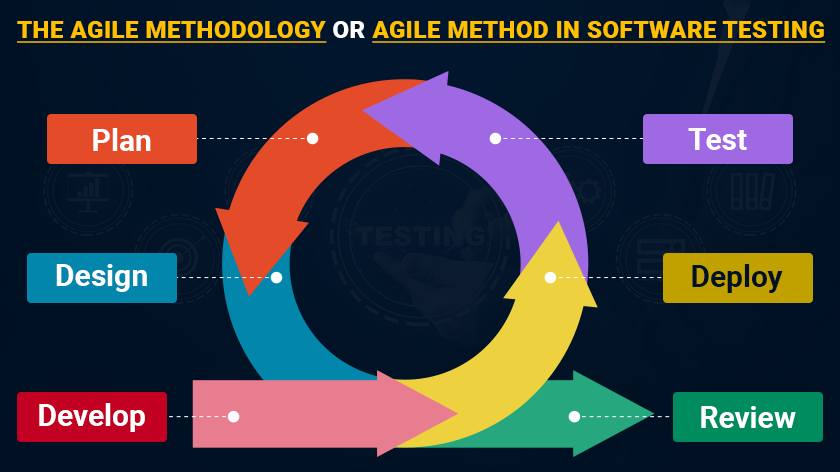Agile means “something that moves quickly and easily” in English. The process of creating procedures for software is hence known as Agile Methodology in Software Testing.
The Agile methodology allows you to continuously refine and evolve your plan, scope, and design throughout the project by working in continuous sprints of project planning and execution.
This Methodology helps the tester get an instant review of the software by the client. It is a quick and simple process that evolves after each iteration and comes with better accuracy. The quality does not get reduced even after going through many iterations, which is one of the benefits of Agile testing.
The Benefits of the Agile Methodology
Products represent the condition of demand at the moment as perceived, by signals from consumers, rivals, and the market at large.
Software is released in workable versions quite regularly and with comparable speed.
- The quality and integrity of a build are understood early in the process
- Dependencies and delivery process bottlenecks are minimized
- Innovations can be introduced at any stage of the product lifecycle
- All teams contribute collaboratively, as opposed to having top advisers, administrators, or consultants give commands to the lower levels of the organization.
- Risks are reduced compared to development cycles that don’t emphasize functional builds
- Emphasis is placed on customer satisfaction and team morale; if neither are happy, then it is understood that the products and processes aren’t meeting needs
- Work is made more manageable and predictable while introducing flexibilities that can accommodate disruptions or sudden shifts in strategy.
Agile Methodology in Testing
Software engineers normally focus on three categories of requirements in traditional waterfall testing and development, which are frequently addressed at various phases of a software project: User requirements outline the tasks or business processes a user will be able to carry out with the product; functional requirements specify the precise system behaviors that must be implemented; and business requirements explain why the product is being built and the benefits both customers and the business will reap. Functional requirements are frequently found in software requirements specifications (SRS) documents used in traditional waterfall development. Analysts utilize these documents to provide developers, testers, and other project stakeholders with thorough requirements information.
Teams are built from subject matter experts from different areas of the organization (cross-functional teams).
Cross-functional teams are responsible for building prototype versions of software/product concepts based on innovative ideas sourced from the team itself as well as customer feedback and product strategy teams.
- The software product is then revised during a short “sprint” to add more functionality, features, improvements, and fixes.
- Ideas for changing and improving the product are sourced from across the company Discussions on these matters take place frequently.
- Cross-functional teams discuss work progress, challenges, priorities, and new emerging opportunities during short daily “stand-up” meetings.
- Once a sprint has been completed, the changes created during the sprint are incorporated into the current version of the product.
Quality controls are introduced throughout the process, including regular testing and the incorporation of customer feedback. Issues with a specific release are discovered and (ideally) dealt with before the integration and delivery of the new release. - After each sprint, the cross-functional team takes time to reflect on the results as well as how the process went. New goals and milestones are likely to be set based on what was learned.
- New sprints are organized for cross-functional teams to take on, which will add new features, improvements, and fixes.
Conclusion: The customer-centric methodology of agile testing produces high-quality deliverables quickly. This method is quick, flexible, and effective in identifying issues early in the development cycle, which lowers expenses and effort by addressing them.
The agile technique transforms project management by emphasizing client satisfaction, adaptability, and teamwork. Teams can negotiate the intricacies of today’s fast-changing business landscape thanks to its iterative methodology, emphasis on continuous improvement, and flexible mentality.
Ready to leverage the power of Agile methodology in your software testing and development processes? Partner with XcelTec, where we help you streamline your project management, enhance product quality, and accelerate time-to-market. Let XcelTec be your trusted partner in achieving agile success.
Visit us today: https://xceltec.com/

